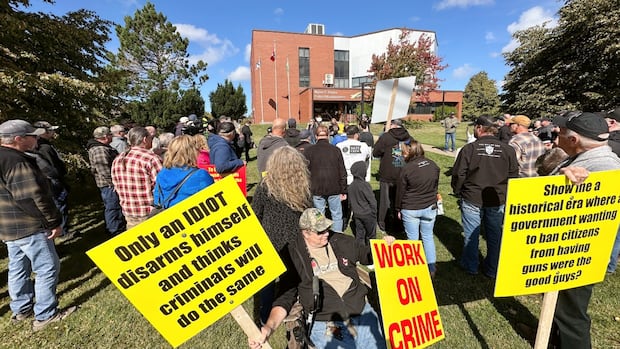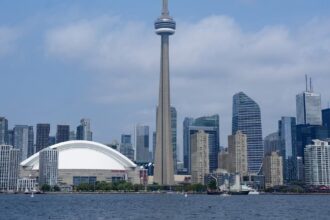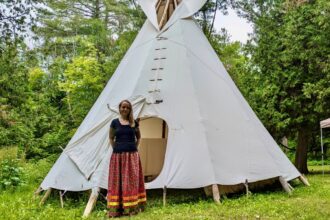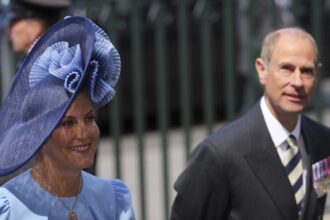As rain drizzled over Cape Breton on Saturday morning, dozens of protesters gathered outside the Cape Breton Regional Police headquarters in Sydney, wielding placards and voicing opposition to the federal government’s controversial gun buyback program. The demonstration represents mounting tension between Ottawa’s firearms regulations and rural Canadian gun owners who feel increasingly marginalized by policies they view as disconnected from their realities.
“These laws are targeting law-abiding citizens while doing absolutely nothing to address actual gun violence,” said protest organizer James MacPherson, a licensed firearms owner and member of the Cape Breton Gun Club. “We’re not criminals, yet we’re being treated as if our legally acquired property suddenly makes us a public threat.”
The federal buyback program, introduced following the May 2020 prohibition of over 1,500 models of “assault-style” firearms, aims to compensate owners of newly prohibited weapons. The initiative was developed in response to the 2020 Nova Scotia mass shooting that claimed 22 lives. However, critics argue the program unfairly penalizes responsible gun owners while failing to address illegal firearms trafficking.
Provincial opposition has intensified recently, with five provinces—Alberta, Saskatchewan, Manitoba, New Brunswick, and now Nova Scotia—refusing to allocate policing resources to enforce the buyback. This resistance has created significant implementation challenges for the federal government.
“Our officers have more important priorities than confiscating legally owned property from citizens who have never broken a law,” said Cape Breton Regional Municipality councillor Steve MacLeod, who attended the protest. “The resources should be directed toward combating illegal guns and gang violence, not harassing hunters and sport shooters.”
The program’s cost has also drawn scrutiny. Initially estimated at $200 million, internal government documents obtained through access to information requests suggest the figure could exceed $750 million. Critics like the Canadian Taxpayers Federation have labeled it an “expensive political gesture” that diverts funds from more effective public safety measures.
For many in attendance, the issue transcends firearms ownership and speaks to a perceived urban-rural divide in Canadian politics. Rural residents often view guns as essential tools for wildlife management, predator control, and sustenance hunting.
“In Toronto, they might see guns as something dangerous and unnecessary,” said Elizabeth MacDonald, a fourth-generation farmer from outside Sydney. “But here, they’re part of our heritage and daily life. When you’re 40 minutes from the nearest RCMP detachment, you need to be self-reliant.”
The federal government maintains that the buyback program is a necessary public safety measure. Public Safety Minister Dominic LeBlanc has emphasized that assault-style weapons are designed for maximum human casualties and have no place in Canadian society.
As both sides dig in, the question remains: can Canada find a balanced approach to firearms regulation that addresses legitimate public safety concerns while respecting the traditions and practical realities of rural communities? Or will the urban-rural divide continue to deepen around an issue that touches on both public safety and cultural identity?










